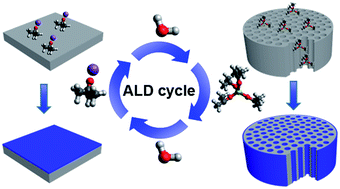Atomically precise growth of sodium titanates as anode materials for high-rate and ultralong cycle-life sodium-ion batteries†
Abstract
Sodium-ion batteries (SIBs) have received increasing attention for applications in large-scale energy storage systems due to their low cost, high energy density, and high abundance of the sodium element. Nanosizing electrode materials becomes a key strategy to overcome the problems resulting from the sluggish kinetics of large sodium ions, thereby achieving good performance in SIBs. Herein, we developed an atomic layer deposition (ALD) approach for atomically precise fabrication of sodium titanate anode materials. This ALD process shows excellent controllability over the growth rate, film thickness, composition of sodium titanates, and high flexibility of coating uniform sodium titanate films onto various dimensions of substrates. Moreover, the amorphous sodium titanate deposited on carbon nanotubes exhibits high specific capacity, excellent rate capability, and ultra-long cycling life (∼100 mA h g−1 after 3500 cycles). It is expected that the ALD approach developed herein can be extended to well-defined fabrication of other sodium-containing electrode materials for SIBs.


 Please wait while we load your content...
Please wait while we load your content...